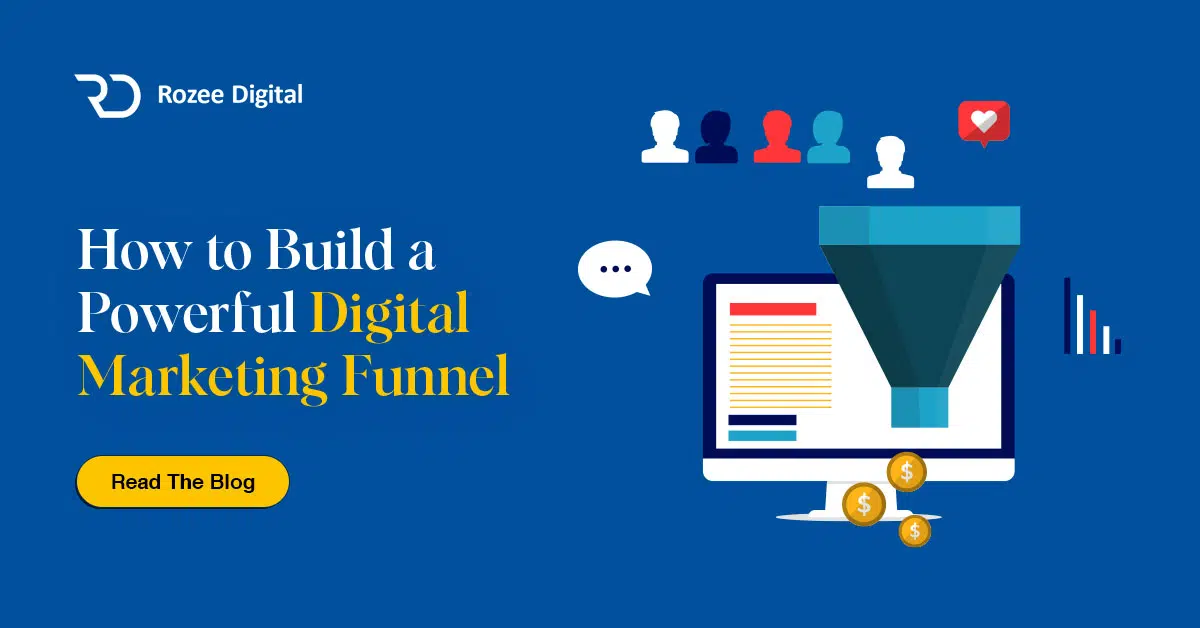Understanding Conversion Rate Optimization (CRO)
In the competitive world of ecommerce, conversion rate optimization (CRO) plays a pivotal role in achieving success. By understanding what CRO is and why it is important for ecommerce brands, businesses can unlock the secrets to improving their conversion rates and ultimately boosting their profitability.
What is Conversion Rate Optimization?
Conversion Rate Optimization (CRO) is the process of improving the percentage of website visitors who take a desired action, such as making a purchase, filling out a form, or subscribing to a newsletter. It involves analyzing user behavior, optimizing landing pages, streamlining the checkout process, and implementing various strategies to increase the chances of conversion.
CRO aims to maximize the value of each visitor to a website by enhancing their experience and removing any barriers that may hinder them from completing a desired action. By understanding how users interact with a website and identifying areas for improvement, businesses can make data-driven changes to increase the likelihood of conversions.
Why is CRO Important for Ecommerce Brands?
For ecommerce brands, CRO is a game-changer. It enables businesses to make the most of their existing website traffic and marketing efforts, ultimately leading to increased sales and revenue. Here are a few reasons why CRO is crucial for ecommerce brands:
- Maximizing ROI: By optimizing conversion rates, businesses can generate more revenue from their existing traffic and marketing campaigns. This means getting the most out of their investments without necessarily increasing their ad spend.
- Improving User Experience: CRO focuses on enhancing the user experience by making it more intuitive, seamless, and enjoyable. By understanding user behavior and preferences, businesses can create a website that caters to their target audience’s needs, leading to higher engagement and increased conversions.
- Gaining a Competitive Edge: In the competitive ecommerce landscape, every advantage matters. By implementing effective CRO strategies, businesses can differentiate themselves from their competitors and provide a superior online experience for their customers.
- Lowering Customer Acquisition Costs: Increasing conversion rates allows businesses to acquire customers at a lower cost. By optimizing their website and marketing funnel, businesses can improve their overall efficiency and reduce the amount spent on acquiring new customers.
By prioritizing CRO, ecommerce brands can unlock their true potential and achieve remarkable growth. In the following sections, we will explore the key elements, game-changing tips, leveraging data, optimizing for mobile users, and continuous improvement strategies that can further enhance the conversion rates of ecommerce websites.
Remember, CRO is an ongoing process that requires continuous monitoring, testing, and refinement. By staying up-to-date with industry trends and implementing effective strategies, businesses can stay ahead of the competition and achieve long-term success in the ecommerce realm.
Key Elements of CRO
To successfully improve conversion rates, it’s important to focus on key elements of Conversion Rate Optimization (CRO). By optimizing these areas, ecommerce brands can enhance their chances of converting website visitors into customers. The key elements of CRO include analyzing user behaviour, optimizing landing pages, and streamlining the checkout process.
Analyzing User Behaviour
Understanding user behaviour is a fundamental aspect of CRO. By analyzing how users interact with your website, you can identify areas for improvement and make data-driven decisions. Key metrics to consider include bounce rate, time spent on page, click-through rates, and exit rates.
To gain insights into user behaviour, utilize analytics tools such as Google Analytics. These tools provide valuable data on user interactions, allowing you to identify patterns, strengths, and weaknesses in your website’s conversion funnel. By understanding how users navigate your site and where they drop off, you can make informed changes to optimize conversion rates.
Optimizing Landing Pages
Landing pages play a critical role in driving conversions. A well-optimized landing page should have a clear and compelling value proposition that resonates with your target audience. It should also have a visually appealing design that engages visitors and encourages them to take the desired action.
When optimizing landing pages, consider the following factors:
- Relevance: Ensure that your landing page is directly related to the ad or link that brought visitors to your site. This creates a seamless and cohesive user experience.
- Clarity: Communicate your message concisely and clearly, highlighting the benefits and value of your offering.
- Call-to-Action: Include a clear call-to-action that stands out and prompts visitors to take the desired action, whether it’s making a purchase, signing up for a newsletter, or requesting more information. For more information on optimizing your landing pages, check out our article on landing page optimization.
Streamlining Checkout Process
A seamless and streamlined checkout process is crucial for optimizing conversion rates. A complex or lengthy checkout process can lead to cart abandonment and lost sales. To streamline the checkout process, consider the following tips:
- Simplify: Minimize the number of steps required for the checkout process. Limit the amount of information you ask from customers and make it easy for them to review and edit their order details.
- Guest Checkout: Offer a guest checkout option to eliminate the need for customers to create an account. This reduces friction and allows for a quicker and smoother checkout process.
- Multiple Payment Options: Provide a variety of payment options to accommodate different preferences and increase the chances of completing a purchase.
By focusing on these key elements of CRO—analyzing user behaviour, optimizing landing pages, and streamlining the checkout process—ecommerce brands can make significant strides in improving their conversion rates. Remember to regularly track and monitor conversion rates to assess the effectiveness of your optimization efforts.
Game-Changing CRO Tips
To achieve significant improvements in conversion rate optimization (CRO), ecommerce brands can implement several game-changing tips. By focusing on conducting A/B testing, implementing clear call-to-actions, and simplifying navigation and user experience, brands can maximize their conversion rates and drive more sales.
Conducting A/B Testing
A/B testing is a powerful technique in CRO that involves comparing two versions of a webpage or an element to determine which one performs better. By conducting A/B tests, ecommerce brands can gather valuable data and insights to make informed decisions about their website design, content, and functionality.
Through A/B testing, brands can experiment with different variations of elements such as headlines, images, buttons, or even entire page layouts. By measuring the performance of each version, brands can identify the elements that resonate best with their target audience and lead to higher conversions. This iterative approach allows for continuous improvement and optimization.
Implementing Clear Call-to-Actions
Clear and compelling call-to-actions (CTAs) are essential for guiding users towards desired actions on a website. CTAs act as signposts, telling users what steps they should take next. To optimize conversion rates, ecommerce brands should strategically place CTAs throughout their website and ensure they are prominent, eye-catching, and easy to understand.
CTAs should use action-oriented language and clearly communicate the benefits users will receive by taking the desired action. For example, instead of using a generic “Submit” button, a brand could use a more persuasive CTA like “Get Your Free Trial Now” or “Shop Now for Exclusive Discounts.” By optimizing CTAs, brands can encourage users to take the desired actions and increase conversion rates.
Simplifying Navigation and User Experience
A seamless and intuitive navigation experience is crucial for enhancing the user journey and increasing conversions. Ecommerce brands should aim to simplify their website’s navigation structure, making it easy for users to find what they’re looking for. Clear and concise menus, well-organized categories, and intuitive search functionality are key elements of an optimized navigation experience.
In addition to navigation, optimizing the overall user experience is vital for increasing conversions. Brands should focus on reducing page load times, optimizing mobile responsiveness, and ensuring a smooth checkout process. By providing a user-friendly experience, brands can minimize friction points and create a positive impression, leading to higher conversion rates.
By implementing these game-changing CRO tips, ecommerce brands can optimize their conversion rates and drive more sales. Remember, CRO is an ongoing process, and continuous monitoring, testing, and adjustment are essential to stay ahead in the competitive online landscape. For more information on conversion rate optimization strategies, check out our article on conversion rate optimization strategies.
Leveraging Data for CRO
To achieve optimal results in conversion rate optimization (CRO), ecommerce brands must leverage data-driven insights. By utilizing analytics tools, tracking and monitoring conversion rates, and identifying conversion roadblocks, brands can make data-informed decisions to improve their conversion rates.
Utilizing Analytics Tools
Analytics tools play a crucial role in CRO. They provide valuable data and insights into user behavior, helping brands understand how visitors interact with their website. By utilizing tools such as Google Analytics or Adobe Analytics, brands can gain a deeper understanding of their audience, identify patterns, and uncover opportunities for optimization. These tools provide valuable metrics such as bounce rate, session duration, and conversion funnels, enabling brands to make data-driven decisions.
Tracking and Monitoring Conversion Rates
Tracking and monitoring conversion rates are essential aspects of CRO. By closely monitoring conversion rates, brands can identify trends, patterns, and areas of improvement. Conversion rates can be tracked at various stages of the customer journey, such as from landing page to purchase completion. By analyzing conversion rates at different touchpoints, brands can pinpoint specific areas that may require optimization, such as the landing pages. For more information on optimizing landing pages, refer to our article on landing page optimization.
Identifying Conversion Roadblocks
Identifying conversion roadblocks is a fundamental step in CRO. By analyzing data, brands can identify potential obstacles that hinder users from completing desired actions, such as making a purchase or filling out a form. These roadblocks can include complex checkout processes, unclear call-to-actions, or a lack of trust signals. By identifying these roadblocks, brands can implement targeted optimizations to remove barriers and improve the overall user experience. For more information on improving conversion rates, refer to our article on increase conversion rates.
In summary, leveraging data is crucial for successful CRO. By utilizing analytics tools, tracking and monitoring conversion rates, and identifying conversion roadblocks, ecommerce brands can gain valuable insights to optimize their websites and increase their conversion rates. By continuously analyzing data and making data-driven decisions, brands can improve the user experience and drive more conversions. For more information on CRO strategies, consider exploring our article on conversion rate optimization strategies.
Optimizing for Mobile Users
In today’s digital landscape, optimizing for mobile users is essential for conversion rate optimization. With more and more people using their mobile devices to browse and shop online, ensuring a seamless mobile experience can significantly impact conversion rates. Here are three key areas to focus on when optimizing for mobile users: mobile-friendly design, responsive checkout process, and optimizing load times.
Mobile-Friendly Design
A mobile-friendly design is crucial for providing a positive user experience on mobile devices. The layout, fonts, images, and buttons should be optimized to fit smaller screens without compromising functionality or aesthetics. Consider implementing a responsive design that adapts to various screen sizes and orientations.
To enhance mobile usability, it’s important to prioritize clear and intuitive navigation. Ensure that menus and links are easy to access and navigate with a touch interface. Additionally, minimize the need for excessive scrolling by organizing content in a concise and user-friendly manner.
Responsive Checkout Process
The checkout process is a critical stage where conversions can either soar or falter. When it comes to mobile users, a responsive checkout process is essential. Simplify the steps involved and minimize the amount of input required. Implement autofill options and provide visual progress indicators to keep users informed about their progress.
Furthermore, ensure that the checkout page is optimized for mobile screens, with clear and easy-to-read form fields. Avoid clutter and distractions that may hinder the completion of the purchase. For more tips on optimizing landing pages and increasing conversion rates, refer to our article on landing page optimization.
Optimizing Load Times
Mobile users expect fast-loading websites, and a delay in page load times can result in higher bounce rates and lower conversion rates. Optimize your website and checkout process to load quickly on mobile devices. Compress images, minify code, and leverage caching techniques to reduce load times.
Consider using a content delivery network (CDN) to serve your website’s assets from servers closest to the user’s location, further reducing load times. A responsive design can also help in optimizing load times by delivering content suited to the user’s device.
To track the impact of your optimization efforts, utilize analytics tools that provide insights into conversion rates and other key metrics. By monitoring and adjusting your strategies based on the data, you can continuously improve the mobile experience and boost conversion rates. For more information on conversion rate optimization, visit our article on conversion rate optimization services.
By optimizing for mobile users with a mobile-friendly design, responsive checkout process, and improved load times, you can create a seamless and enjoyable experience for your mobile audience. Remember to stay up-to-date with industry trends and continually test and adjust your strategies to ensure ongoing success in your conversion rate optimization endeavors.
Continuous Improvement and Testing
To achieve optimal results in conversion rate optimization (CRO), it’s essential to adopt a mindset of continuous improvement and testing. This section explores three key aspects of this approach: iterative approach to CRO, monitoring and adjusting strategies, and staying up-to-date with industry trends.
Iterative Approach to CRO
Successful CRO requires an iterative approach, where strategies and tactics are constantly tested, analyzed, and refined. This involves running experiments, gathering data, and making data-driven decisions to improve conversion rates. By implementing changes in small increments and measuring their impact, ecommerce brands can identify what works best for their target audience and make informed adjustments.
To start, conduct A/B testing to compare different versions of elements on your website, such as headlines, images, or call-to-action buttons. This allows you to understand which variation performs better and make data-backed decisions for optimization. Keep in mind that CRO is an ongoing process, and continuous testing is key to uncovering new opportunities for improvement.
Monitoring and Adjusting Strategies
Regularly monitoring and analyzing key metrics is crucial for successful CRO. Utilize analytics tools to track and understand user behavior, conversion rates, and other relevant data points. This provides insights into customer preferences, pain points, and potential conversion roadblocks. By identifying areas that need improvement, you can develop targeted strategies to address them.
Implementing a monitoring system allows you to gather data and make informed decisions about adjustments to your strategies. For example, if you notice a high drop-off rate at a specific stage in the checkout process, you can focus on optimizing the checkout to reduce abandonment. Regularly reviewing and adjusting your strategies based on data analysis ensures that you are continuously improving your conversion rates.
Staying Up-to-Date with Industry Trends
The field of CRO is constantly evolving, with new technologies, techniques, and consumer behaviors emerging. To stay ahead of the curve, it’s essential to stay up-to-date with the latest industry trends and best practices. This includes keeping an eye on industry publications, attending conferences or webinars, and participating in relevant forums or communities.
By staying informed, you can learn about new strategies, tools, and tactics that may benefit your CRO efforts. Networking with other professionals in the field can provide valuable insights and exchange of ideas. Remember that what works today may not work tomorrow, so staying current ensures that you are utilizing the most effective methods for conversion rate optimization.
By adopting an iterative approach, monitoring and adjusting strategies, and staying up-to-date with industry trends, ecommerce brands can unlock the full potential of their CRO efforts. Remember that CRO is an ongoing process, and continuous improvement is key to achieving and maintaining high conversion rates.







